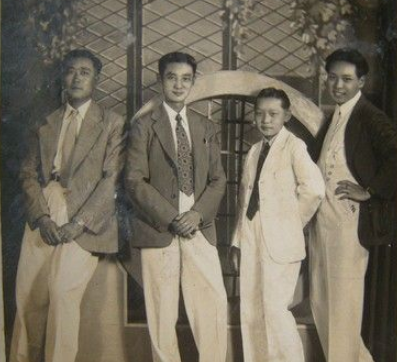In modern Chinese history, there were four extraordinary young men: Zhang Boxju, Zhang Xueliang, Pu Tong, and Yuan Kewen. These four young men, who hailed from distinguished backgrounds and possessed remarkable talents, left profound marks in the social upheaval of their time and became a unique landscape of the Republic of China period.

First, let us learn about Zhang Boxju. Zhang Boxju (1895-1974), styled Xiqian and known by the name Shi Tao, was born in Hefei, Anhui. He was a renowned politician, military strategist, and calligrapher during the Republic of China period. He served as the head of the Nationalist Government's administrative agency and defense minister, acting as an able assistant to Chiang Kai-shek. In terms of calligraphy, Zhang Boxju excelled at running script and was praised as "the first runner of the Republic of China," with his works possessing high artistic value.
Next is Zhang Xueliang (1901-2001), styled Hanqing and hailing from Haicheng, Liaoning. He is a famous military strategist and politician in modern Chinese history. He once held positions such as commander-in-chief of the Northeast Army and vice chairman of the Nationalist Government's Military Committee, serving as one of the key leaders of the National Revolution. Zhang Xueliang is most widely recognized for his courageous actions during the Xi'an Incident, where he joined forces with General Yang Hucheng to detain the then-chair of the Nationalist Government, Chiang Kai-shek, forcing him to halt civil war and unite against Japan. This event played a crucial role in the victory of China's Anti-Japanese War.
The third young man is Pu Tong (1897-1966), styled Xuezhai and also known as Shi Tao, born in Changsha, Hunan. He was a cousin of the last emperor of Qing Dynasty, Pu Yi. Pu Tong served as the director of the Nationalist Government's Examination Yard and chairman of the Hunan Provincial Government, becoming a renowned politician and calligrapher during the Republic of China period. His calligraphy skills were particularly outstanding in regular script, earning him the title "the First Regular Script of the Republic of China".
Lastly, we have Yuan Kewen (1895-1963), styled Ziying and hailing from Xiangcheng, Henan. He was a prominent politician and calligrapher in the Republic of China era. Yuan Kewen held important positions such as head of the Nationalist Government's administrative agency and foreign minister, assisting Chiang Kai-shek significantly. His calligraphy excelled in seal script, earning him the moniker "the First Seal Script of the Republic of China".
These four young men of the Republic of China, despite coming from different backgrounds, all achieved remarkable achievements in politics, military affairs, and calligraphy through their own talents and efforts. Their legendary lives became a unique landscape of the period, which has been passed down through later generations.
Disclaimer: The above content is sourced from the internet and the copyright belongs to the original author. If there is any infringement of your original copyright, please inform us and we will delete the relevant content as soon as possible.
































